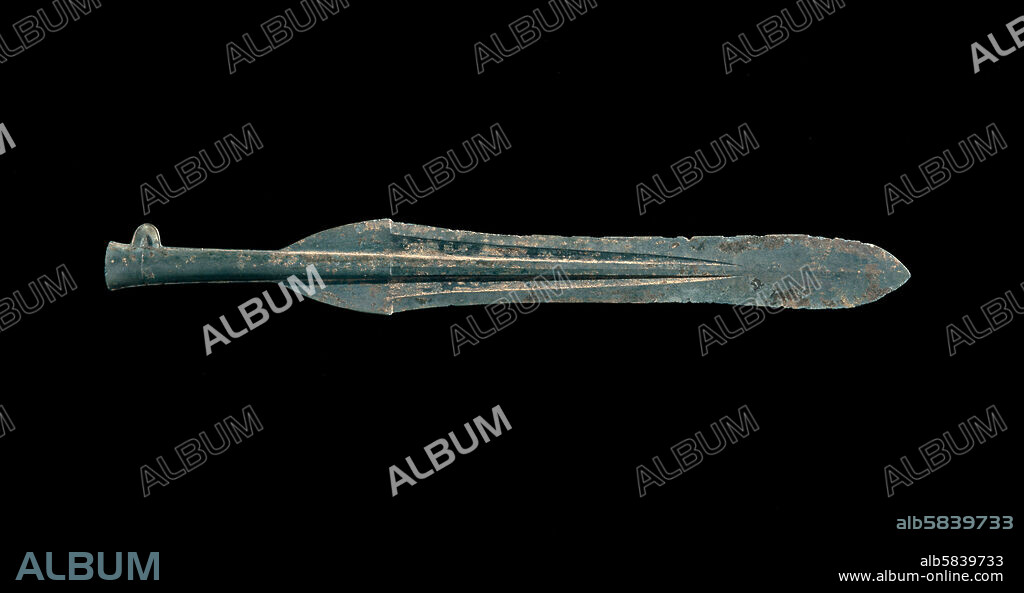alb5839733
Dôhoko (ritual spear blade), Yayoi period, Japan, c300 BC-300 AD. This bronze spear blade is said to have been excavated at Okamoto-chô, Kasuga City, in modern Fukuoka Prefecture. The blade has no attachment hole at the end, which suggests that it had no practical use but, like dôtaku and mirrors at the time, was made for burial in a ceremony possibly connected with agriculture. Its form is copied from a Chinese original. Iron and bronze were introduced into Japan at about the same time, so there was no recognizable 'Bronze Age' predating the use of iron. Iron was quickly recognized as the stronger of the two metals, more suitable for producing tools and weapons. Bronze was used for ritual objects such as mirrors, daggers and spears such as this one. JA, 1965.2-23.3.

|
Zu einem anderen Lightbox hinzufügen |
|
Zu einem anderen Lightbox hinzufügen |



Haben Sie bereits ein Konto? Anmelden
Sie haben kein Konto? Registrieren
Dieses Bild kaufen.
Nutzung auswählen:

Untertitel:
Siehe automatische Übersetzung
Dôhoko (ritual spear blade), Yayoi period, Japan, c300 BC-300 AD. This bronze spear blade is said to have been excavated at Okamoto-chô, Kasuga City, in modern Fukuoka Prefecture. The blade has no attachment hole at the end, which suggests that it had no practical use but, like dôtaku and mirrors at the time, was made for burial in a ceremony possibly connected with agriculture. Its form is copied from a Chinese original. Iron and bronze were introduced into Japan at about the same time, so there was no recognizable 'Bronze Age' predating the use of iron. Iron was quickly recognized as the stronger of the two metals, more suitable for producing tools and weapons. Bronze was used for ritual objects such as mirrors, daggers and spears such as this one. JA, 1965.2-23.3
Klassifikation:
Standort:
British Museum, London, Great Britain
Bildnachweis:
Erich Lessing / Album
Freigaben (Releases):
Bildgröße:
3200 x 1687 px | 15.4 MB
Druckgröße:
27.1 x 14.3 cm | 10.7 x 5.6 in (300 dpi)
Schlüsselwörter:
3. JH. V. U. Z. -1. JH. U. Z. • BRITISH MUSEUM, LONDON, GREAT BRITAIN • JAPAN • JAPANER • JAPANERIN • JAPANISCH • KULT • LANZE • ORMNAMENT: JAPANISCH • RELIGION • SPEER • SPIESS • WAFFE • WAFFE: LANZE • WAFFE: SPEER • WAFFE: SPIESS • WAFFEN
 Pinterest
Pinterest Twitter
Twitter Facebook
Facebook Link kopieren
Link kopieren Email
Email
